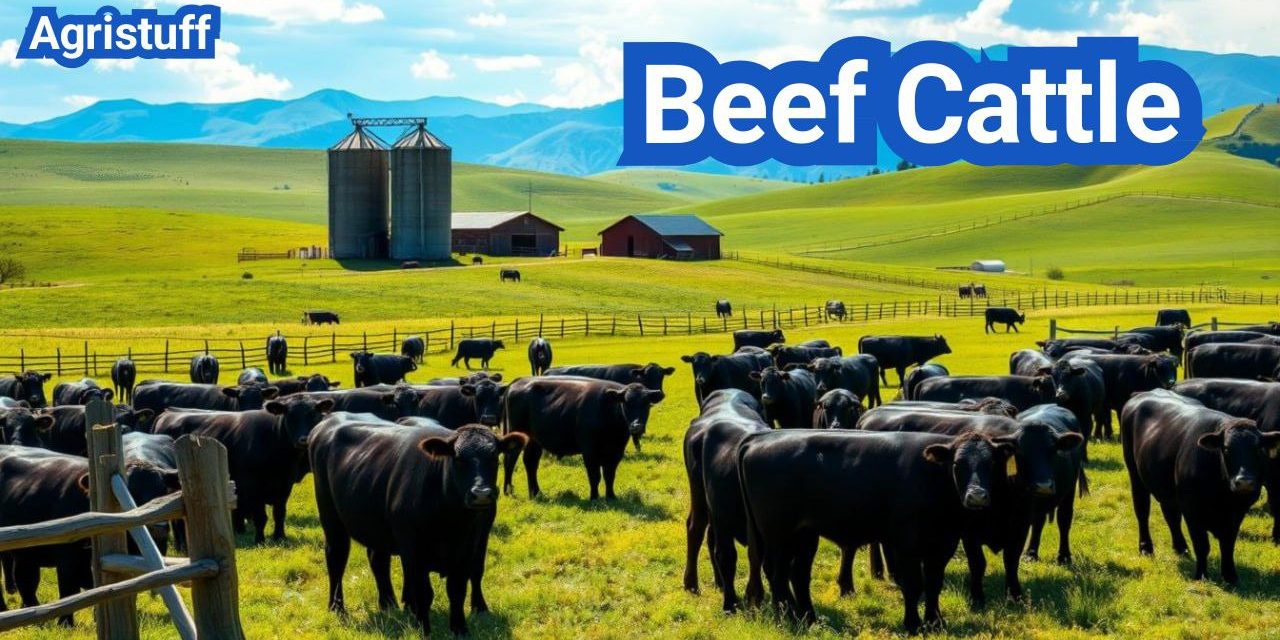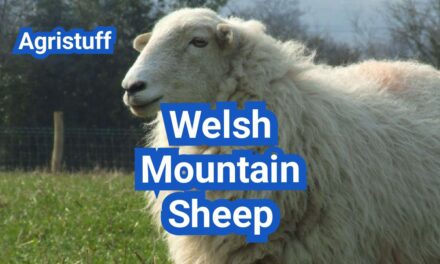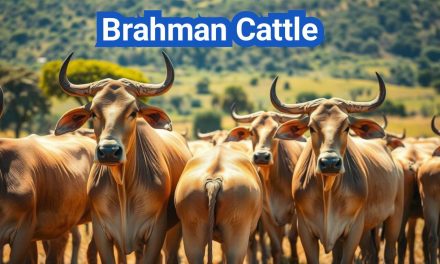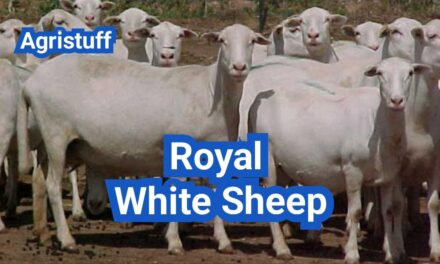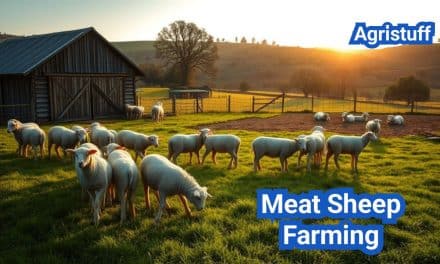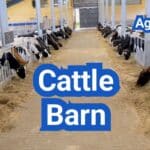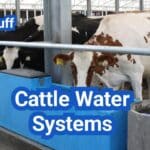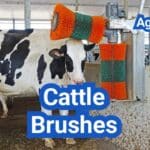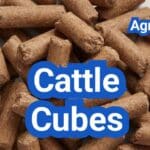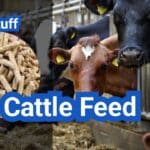Beef cattle farming is a vital part of global agriculture, serving as a significant source of protein and economic income. The industry encompasses a variety of breeds, feeding practices, and management techniques.
Understanding the fundamentals of livestock farming is essential for anyone looking to venture into this field. With the global demand for beef on the rise, adopting sustainable and profitable farming methods is more crucial than ever.
Key Takeaways
- Beef cattle farming is a significant contributor to global protein supply.
- Various cattle breeds are used in beef production.
- Effective grazing management is crucial for sustainable farming.
- Proper feeding practices impact the quality of beef.
- Management techniques vary depending on the farm size and type.
Understanding the Beef Cattle Industry
Understanding the complexities of the beef cattle industry is crucial for farmers and stakeholders to navigate its challenges and opportunities. The industry is influenced by a myriad of factors including economic conditions, consumer demand, and global market trends.
Current State of U.S. Beef Production
The United States is one of the world’s largest producers of beef, with the industry being a significant agricultural activity. The current state of U.S. beef production is characterized by advancements in technology, breeding practices, and feeding strategies that have improved efficiency and productivity. According to recent data, the U.S. beef cow population is substantial, contributing significantly to the global beef supply.
Economic Importance of Beef Cattle Farming
Beef cattle farming holds considerable economic importance, extending beyond the production of beef to include employment opportunities in rural areas and contributions to the overall agricultural economy. The industry supports a wide range of businesses, from feed suppliers to equipment manufacturers, thereby playing a vital role in the economic fabric of rural communities.
Economic Importance of Beef Cattle Farming
The economic significance of beef cattle farming is multifaceted, encompassing not only the production and sale of cattle but also its impact on rural development and job creation. In regions like Ontario, for instance, beef cattle farming is a notable activity, with a considerable number of farms contributing to the local economy.
Market Trends and Opportunities
The beef cattle industry is subject to various market trends and opportunities, influenced by consumer preferences, global demand, and trade policies. There is a growing trend towards sustainable and regenerative farming practices, driven by consumer interest in environmentally friendly products. Understanding these trends is essential for farmers and stakeholders to capitalize on emerging opportunities and navigate challenges.
Market trends such as the increasing demand for grass-fed beef and the adoption of regenerative agriculture practices present opportunities for farmers to differentiate their products and potentially increase profitability.
Getting Started with Beef Cattle Farming

Embarking on a beef cattle farming venture requires meticulous planning and a thorough understanding of the initial requirements. Beef cattle farming is a complex operation that involves multiple facets, from land preparation to legal compliance.
Land Requirements and Infrastructure
The amount of land required for beef cattle farming can vary significantly depending on factors such as breed, grazing management practices, and climate. Generally, a minimum of 10 acres is recommended for a small-scale operation, but this can scale up to hundreds of acres for larger commercial farms.
Infrastructure is another critical aspect. This includes fencing, water supply systems, and cattle handling facilities. Fencing is essential for dividing pastures and controlling cattle movement. A reliable water supply is crucial, with estimates suggesting that cattle need around 10-15 gallons of water per head per day.
| Infrastructure Component | Description | Estimated Cost |
|---|---|---|
| Fencing | Perimeter and internal fencing for pasture management | $3-$5 per linear foot |
| Water Supply System | Pumps, pipes, and troughs for cattle watering | $1,000-$3,000 |
| Cattle Handling Facilities | Chutes, pens, and loading ramps for cattle management | $2,000-$5,000 |
Initial Investment and Equipment Needs
The initial investment for beef cattle farming includes the cost of purchasing cattle, equipment, and infrastructure. The cost per head can vary widely depending on the breed and quality of the cattle. High-quality breeding stock can cost anywhere from $1,000 to $3,000 per head.
Equipment needs include tractors, mowers, and cattle handling equipment. The cost of equipment can range from $10,000 to $50,000 or more, depending on the size and complexity of the operation.
“The initial investment in beef cattle farming is significant, but with careful planning and management, it can be a highly rewarding venture.”
— John Smith, Beef Cattle Farmer
Legal Requirements and Regulations
Beef cattle farming is subject to various legal requirements and regulations, including environmental regulations, animal welfare laws, and zoning laws. It is essential to familiarize yourself with local, state, and federal regulations to avoid potential issues.
Some key areas to consider include:
- Environmental regulations related to water quality and waste management
- Animal welfare laws governing cattle handling and care
- Zoning laws and land-use regulations
Understanding and complying with these regulations is crucial for the success and sustainability of your beef cattle farming operation.
Top Beef Cattle Breeds for Commercial Production
With numerous breeds to choose from, identifying the top beef cattle breeds for commercial production is essential for maximizing returns. The right breed can significantly impact the quality, quantity, and profitability of beef production.
Angus Cattle: Black and Red Varieties
Angus cattle, particularly the black variety, are among the most popular breeds in the U.S. due to their high-quality beef and marbling characteristics. The red Angus variety also offers excellent meat quality and is known for its hardiness.
Key Characteristics: High marbling, fine-grained beef, and a robust growth rate make Angus cattle a preferred choice for many commercial producers.
Hereford Cattle
Hereford cattle are recognized for their hardiness and docile nature, making them an excellent choice for a variety of production systems. They are known for their rapid growth rate and high-quality beef.
Advantages: Herefords are praised for their mothering ability, ease of calving, and adaptability to different environments.
Simmental and Beefmaster Breeds
Simmental cattle are known for their rapid growth rate and muscular development, making them suitable for crossbreeding programs aimed at improving beef production. Beefmaster, a composite breed, offers a combination of hardiness, growth rate, and fertility.
- Simmental cattle: Known for rapid growth and muscular development.
- Beefmaster cattle: Combines hardiness with a high growth rate and fertility.
Specialty Breeds: Wagyu, Belgian Blue, and Piedmontese
Specialty breeds like Wagyu, Belgian Blue, and Piedmontese are gaining popularity for their unique characteristics. Wagyu cattle are renowned for their intense marbling, Belgian Blue for their muscular development, and Piedmontese for their lean, tender beef.
| Breed | Key Characteristics | Advantages |
|---|---|---|
| Angus | High marbling, fine-grained beef | High-quality beef, robust growth rate |
| Hereford | Hardy, docile, rapid growth | Mothering ability, ease of calving |
| Simmental | Rapid growth, muscular development | Suitable for crossbreeding, high beef production |
| Wagyu | Intensive marbling | High-quality, premium beef |
| Belgian Blue | Muscular development | Lean, high-yielding beef |
| Piedmontese | Lean, tender beef | High-quality beef, unique genetic traits |
Heritage and Traditional Beef Cattle Breeds

Exploring heritage and traditional beef cattle breeds reveals a wealth of options for farmers seeking sustainable practices. These breeds have been developed over centuries for their unique characteristics, such as hardiness and adaptability, making them ideal for various farming conditions.
Texas Longhorn Cattle
Texas Longhorn cattle are renowned for their hardiness and adaptability, having been developed in the harsh environments of North America. Their ability to thrive in challenging conditions makes them an excellent choice for farmers looking for a resilient breed.
Key characteristics:
- Hardiness and adaptability
- Resistance to disease
- Ability to thrive on low-quality forage
Scottish Highland Cattle
Scottish Highland cattle are known for their rugged appearance and ability to thrive in harsh, rugged climates. Their thick coats and hardy nature make them well-suited to cooler, wetter climates.
Key benefits:
- High-quality beef production
- Hardiness in challenging weather conditions
- Efficient grazing capabilities
Belted Galloway and Galloway Breeds
Belted Galloway and Galloway breeds are recognized for their high-quality beef and hardy nature. The Belted Galloway is particularly noted for its distinctive white belt, while both breeds are praised for their maternal instincts and ease of calving.
Notable traits include:
- High fertility rates
- Ease of calving
- Strong maternal instincts
Brahman and Brahman-Influenced Breeds
Brahman and Brahman-influenced breeds are celebrated for their heat tolerance and resistance to insects, making them ideal for hot, humid climates. Their hardiness and productivity contribute significantly to beef production in challenging environments.
Advantages:
- Heat tolerance
- Insect resistance
- Improved productivity in challenging climates
How to Select the Right Beef Cattle for Your Operation
To ensure the profitability and sustainability of your beef cattle operation, it’s essential to select breeds that are well-suited to your local environment and production goals. The right breed can significantly impact your farm’s efficiency, productivity, and overall profitability.
Assessing Climate and Regional Adaptability
Climate adaptability is a critical factor in selecting beef cattle breeds. Farmers should consider their local environment when choosing breeds. For instance, in hotter climates, breeds with heat tolerance such as Brahman or Brahman-influenced cattle are often preferred. In contrast, colder climates may be more suitable for hardy breeds like Scottish Highland or Angus cattle.
Key factors to consider when assessing climate adaptability include:
- Temperature tolerance
- Humidity levels
- Altitude
- Availability of shade and shelter
Matching Breeds to Production Goals
Different beef cattle breeds are suited to different production goals. For example, if your primary goal is to produce high-quality beef, breeds known for their marbling and meat quality, such as Wagyu or Angus, might be ideal. On the other hand, if you’re looking for a breed that can efficiently gain weight, Simmental or Charolais might be more suitable.
Consider the following production goals when selecting a breed:
- Growth rate
- Meat quality and marbling
- Milk production for calf rearing
- Hardiness and disease resistance
Implementing Effective Crossbreeding Strategies
Crossbreeding can be an effective strategy to enhance desirable traits in cattle, such as improved growth rates, better disease resistance, and increased hardiness. By crossing breeds with complementary strengths, farmers can produce cattle that are better suited to their specific operational needs and environmental conditions.
Benefits of crossbreeding include:
- Hybrid vigor resulting in improved performance
- Increased genetic diversity
- Better adaptation to local conditions
- Potential for improved profitability
Essential Beef Cattle Nutrition and Feeding Practices

Proper nutrition is the backbone of beef cattle farming, influencing every aspect from growth rates to final product quality. Understanding the nutritional needs of beef cattle is crucial for optimizing their health and productivity.
Calculating Basic Nutritional Requirements
Beef cattle have different nutritional requirements at various stages of their life cycle. For instance, growing calves require more protein for development compared to mature cows. Accurate calculation of these needs is fundamental to developing effective feeding strategies.
A comprehensive nutritional assessment involves evaluating the cattle’s age, weight, breed, and production stage. This information helps in formulating diets that meet their specific needs, ensuring optimal growth and health.
| Nutritional Component | Growing Calves | Lactating Cows | Finishing Cattle |
|---|---|---|---|
| Protein (%) | 14-16 | 12-14 | 11-13 |
| Energy (MJ/kg) | 10-12 | 9-11 | 12-14 |
| Calcium (%) | 0.6-0.8 | 0.5-0.7 | 0.5-0.7 |
Developing Forage-Based Diets
Forage-based diets are a cornerstone of beef cattle nutrition. High-quality forages provide essential nutrients, including fiber, which is vital for maintaining a healthy rumen.
Forage quality can vary significantly depending on factors like grass species, maturity at harvest, and storage conditions. Therefore, regular analysis of forage is necessary to determine its nutritional value and to adjust diets accordingly.
“The quality of forage directly impacts the nutritional intake and overall health of beef cattle. Ensuring access to high-quality forage is a critical aspect of effective cattle management.”
Implementing Strategic Supplementation
While forage-based diets form the foundation of beef cattle nutrition, strategic supplementation is often necessary to meet specific nutritional requirements. Supplements can include minerals, vitamins, and additional energy sources.
The decision to supplement should be based on a thorough nutritional analysis and consideration of the cattle’s production stage and goals. Strategic supplementation can significantly enhance growth rates, fertility, and overall cattle health.
Adjusting Rations for Different Production Stages
Beef cattle have different nutritional needs at various production stages, from weaning through to finishing. Adjusting rations to meet these changing needs is crucial for optimizing performance and efficiency.
For example, lactating cows require additional energy and nutrients to support milk production for their calves. In contrast, finishing cattle may require more energy-dense diets to promote rapid weight gain.
By understanding and responding to these changing nutritional requirements, farmers can improve the overall productivity and sustainability of their beef cattle operations.
Mastering Grazing Management Techniques

Mastering grazing management is essential for beef cattle farmers to improve pasture quality and reduce environmental impact. Effective grazing management techniques are crucial for maintaining the health and productivity of pastures, which in turn affect the overall sustainability of beef cattle operations.
Setting Up Rotational Grazing Systems
Rotational grazing is a technique that involves moving cattle to different pastures to allow the grazed areas to recover. This method helps in improving soil health, reducing erosion, and increasing biodiversity. Implementing rotational grazing systems can be done by dividing pastures into smaller sections or paddocks and rotating cattle through these areas.
The benefits of rotational grazing include:
- Increased forage production
- Improved soil fertility
- Reduced parasite and disease pressure
- Enhanced biodiversity
As noted by a grazing expert,
“Rotational grazing is not just about moving cattle from one place to another; it’s about creating a symbiotic relationship between the cattle, the pasture, and the land.”
Improving and Maintaining Pastures
Improving and maintaining pastures is vital for sustainable grazing practices. This can be achieved through proper fertilization, weed control, and overseeding with appropriate forage species. Regular monitoring of pasture health and adjusting management practices accordingly is also crucial.
| Pasture Management Practice | Benefits |
|---|---|
| Fertilization | Improves soil fertility, increases forage production |
| Weed Control | Reduces competition for desired forage species |
| Overseeding | Enhances forage diversity and density |
Extending the Grazing Season
Extending the grazing season can be achieved through strategies like stockpiling forage, using cover crops, and implementing strip grazing. Stockpiling forage involves allowing forage to accumulate in pastures during periods of active growth, which can then be grazed during periods of slower growth.
By adopting these grazing management techniques, beef cattle farmers can improve the sustainability and productivity of their operations. Effective grazing management not only benefits the farm but also contributes to environmental stewardship.
Comprehensive Beef Cattle Management Practices

To achieve optimal results in beef cattle farming, it’s essential to implement robust management strategies. Comprehensive beef cattle management practices encompass a range of activities that are crucial for the health, productivity, and profitability of the herd.
Planning the Breeding Season
Planning the breeding season is a critical component of beef cattle management. It involves considerations such as genetics, reproductive health, and nutritional status to optimize reproductive efficiency. A well-planned breeding season can lead to improved calf uniformity, better birth weights, and enhanced overall herd productivity.
Key factors to consider when planning the breeding season include:
- Selecting appropriate breeding stock
- Ensuring optimal nutritional levels for breeding animals
- Implementing effective breeding strategies
Managing Calving and Newborn Care
Managing calving and providing appropriate newborn care are vital for reducing mortality rates and ensuring the health of calves. This involves monitoring calving, providing assistance when necessary, and ensuring that newborn calves receive adequate colostrum.
Best practices for calving management include:
- Monitoring heifers and cows closely during the calving season
- Maintaining a clean and safe calving environment
- Ensuring timely veterinary intervention when needed
Implementing Effective Weaning Strategies
Implementing effective weaning strategies is crucial for the overall productivity of the herd. Weaning is a stressful period for calves, and proper management can minimize this stress and improve calf health.
| Weaning Strategy | Description | Benefits |
|---|---|---|
| Gradual Weaning | Gradually reducing milk intake over a period | Reduces stress, improves health |
| Fenceline Weaning | Keeping calves near their dams but separated by a fence | Reduces stress, allows for some interaction |
| Two-Step Weaning | Initially preventing nose-to-nose contact, then complete separation | Minimizes stress, improves adaptation |
Establishing Record Keeping Systems
Establishing robust record-keeping systems is essential for monitoring and improving beef cattle management practices. Accurate records help in making informed decisions regarding breeding, health, and nutrition.
Key records to maintain include:
- Breeding and calving records
- Health records, including vaccinations and treatments
- Nutritional and feeding records
Beef Cattle Health Care and Disease Prevention

Effective health care and disease prevention strategies are essential for a thriving beef cattle operation. Maintaining the health of beef cattle is crucial for their productivity and welfare, and a comprehensive approach to health care is vital for preventing diseases.
Vaccination Protocols
Developing vaccination protocols is a critical aspect of disease prevention in beef cattle. Vaccinations help protect cattle from common diseases and reduce the risk of outbreaks. A well-planned vaccination program should be tailored to the specific needs of the operation, taking into account factors such as the age and health status of the cattle, as well as regional disease prevalence.
“Vaccination is a crucial tool in maintaining herd health,” says Dr. John Smith, a renowned veterinarian specializing in cattle care. “By vaccinating cattle against common diseases, farmers can significantly reduce the risk of illness and improve overall productivity.”
Parasite Control Programs
Implementing parasite control programs is another key aspect of maintaining beef cattle health. Parasites such as ticks, flies, and worms can cause significant harm to cattle, leading to reduced productivity and increased susceptibility to disease. Effective parasite control involves a combination of strategies, including the use of parasiticides, pasture management, and monitoring for parasite loads.
- Regularly monitor cattle for signs of parasite infestation
- Implement rotational grazing to reduce parasite loads on pastures
- Use parasiticides judiciously to minimize resistance
Recognizing and Treating Common Health Issues
Recognizing and treating common health issues promptly is essential for preventing the spread of disease in beef cattle. Farmers should be aware of the signs and symptoms of common health issues, such as respiratory disease, and have a plan in place for treating affected animals. Prompt treatment can significantly improve outcomes and reduce the risk of complications.
| Common Health Issue | Signs and Symptoms | Treatment Options |
|---|---|---|
| Respiratory Disease | Coughing, labored breathing, lethargy | Antibiotics, anti-inflammatory medications |
| Parasite Infestation | Weight loss, diarrhea, skin lesions | Parasiticides, supportive care |
Building a Veterinary Relationship
Building a relationship with a veterinarian is vital for obtaining professional advice and care for beef cattle. A veterinarian can provide guidance on developing vaccination protocols, implementing parasite control programs, and recognizing and treating common health issues. A strong veterinary relationship is essential for maintaining the health and productivity of the herd.
“A good veterinarian is a valuable partner in maintaining the health of your cattle,” says Jane Doe, a beef cattle farmer. “By working together, you can develop effective health care strategies and improve overall productivity.”
Understanding Beef Production Systems

Understanding the different beef production systems is crucial for farmers and producers to optimize their operations. Beef production systems vary widely, encompassing different stages from breeding to finishing.
Operating a Cow-Calf Business
A cow-calf operation is the foundation of the beef industry, focusing on breeding and raising calves. This stage is critical as it sets the groundwork for the overall health and productivity of the cattle. Effective cow-calf management involves selecting the right breeds, managing nutrition, and ensuring proper healthcare for the herd.
Key considerations for a successful cow-calf operation include:
- Selecting breeds adapted to the local climate and market demands
- Implementing a robust nutrition plan that meets the nutritional needs of the cattle
- Maintaining a comprehensive healthcare program to prevent and treat diseases
Running a Stocker Operation
A stocker operation involves growing cattle from weaning to a certain weight, typically before they are moved to a feedlot for finishing. This stage is vital for improving the overall efficiency of beef production. Stocker operations require careful management of grazing resources and nutrition to ensure optimal growth rates.
Effective stocker operation strategies include:
- Rotational grazing to improve pasture utilization and reduce erosion
- Strategic supplementation to enhance growth rates and health
- Monitoring cattle health and implementing timely interventions
Managing Feedlot Finishing
Feedlot finishing is the final stage of beef production, where cattle are fed a diet designed to promote rapid weight gain and finish. Managing a feedlot effectively involves balancing nutrition, health, and environmental considerations.
Key aspects of feedlot finishing include:
- Formulating diets that meet the nutritional needs of the cattle while minimizing costs
- Implementing health programs to prevent disease and promote growth
- Managing manure and waste to reduce environmental impact
Creating Integrated Production Systems
Integrated production systems combine multiple stages of beef production, from cow-calf to feedlot finishing, into a single operation. This approach can offer several advantages, including improved efficiency, reduced costs, and enhanced quality control.
Benefits of integrated production systems include:
- Improved coordination across different stages of production
- Enhanced ability to track and manage cattle health and performance
- Better control over the quality of the final product
Sustainable and Profitable Beef Cattle Farming

The future of beef cattle farming lies in its ability to balance profitability with sustainability. As consumers become more environmentally conscious, the demand for sustainably produced beef is on the rise.
Implementing Environmental Stewardship Practices
Environmental stewardship is crucial for sustainable beef farming. This involves adopting practices that minimize the environmental impact of beef production, such as reducing soil erosion, conserving water, and promoting biodiversity.
Regenerative grazing is one such practice that has gained popularity. It involves rotating cattle to different grazing areas to avoid overgrazing, which can lead to soil degradation and loss of vegetation. By implementing regenerative grazing, farmers can enhance soil health, improve water retention, and increase biodiversity.
Reducing Carbon Footprint in Beef Production
Beef production is a significant contributor to greenhouse gas emissions. However, by adopting certain practices, farmers can reduce their carbon footprint. This includes improving feed efficiency, managing manure effectively, and using renewable energy sources on farms.
For instance, using cover crops and crop rotation can enhance soil carbon sequestration, reducing the overall carbon footprint of beef production. Additionally, implementing energy-efficient practices in farm operations can further contribute to reducing emissions.
Adopting Regenerative Grazing Methods
Regenerative grazing is not just beneficial for the environment; it can also improve the profitability of beef cattle farming. By enhancing soil health and biodiversity, farmers can increase the productivity of their grazing lands, leading to healthier cattle and higher-quality beef.
Farmers can start by assessing their current grazing practices and identifying areas for improvement. This might involve dividing larger grazing areas into smaller paddocks and rotating cattle more frequently. Monitoring soil health and vegetation can help in making informed decisions about grazing management.
Balancing Sustainability with Profitability
While sustainability is crucial, it’s equally important to maintain profitability in beef cattle farming. Farmers can achieve this balance by adopting practices that not only reduce environmental impact but also improve efficiency and productivity.
For example, improving cattle health through better nutrition and healthcare can lead to higher productivity and profitability. Additionally, exploring value-added marketing opportunities, such as selling directly to consumers or producing organic beef, can enhance profitability while maintaining sustainable practices.
Marketing Your Beef Cattle for Maximum Returns

To achieve maximum profitability in beef cattle farming, understanding and implementing the right marketing strategies is essential. Effective marketing can make a significant difference in the success of a beef cattle operation.
Navigating Cattle Markets and Cycles
Understanding cattle markets and cycles is crucial for making informed decisions in beef cattle farming. The cattle market is influenced by various factors, including supply and demand, consumer preferences, and global market trends. As noted by industry experts, “Market cycles can significantly impact the profitability of beef cattle operations.”
“The cattle cycle is a complex process influenced by numerous factors, including feed availability, consumer demand, and global trade policies.”
Key factors to consider when navigating cattle markets include:
- Supply and demand dynamics
- Seasonal market fluctuations
- Global market trends
- Consumer preferences and trends
Exploring Direct Marketing Options
Direct marketing offers beef cattle farmers an opportunity to sell their products directly to consumers, potentially increasing profit margins. This approach allows farmers to build a direct relationship with consumers, promoting their products and brand. Direct marketing strategies can include farmers’ markets, online sales, and farm-to-table programs.
Developing Value-Added Marketing Strategies
Value-added marketing involves enhancing the value of beef products through branding, certification, and other means. This can significantly increase the profitability of beef cattle farming operations. Strategies may include organic or grass-fed certification, beef aging, and premium packaging.
Benefits of value-added marketing include:
- Increased product value
- Enhanced consumer trust
- Potential for premium pricing
Using Risk Management Tools
Risk management is critical in beef cattle marketing to mitigate potential losses due to market fluctuations. Tools such as futures contracts, options, and hedging can help manage price risks. It’s essential for farmers to understand these tools and use them effectively.
By understanding cattle markets, exploring direct marketing options, developing value-added strategies, and using risk management tools, beef cattle farmers can maximize their returns. Effective marketing is key to the success and profitability of beef cattle farming operations.
Building a Successful Beef Cattle Operation
Building a successful beef cattle operation requires a comprehensive approach that encompasses selecting the right breeds, implementing effective feeding and management practices, and adopting sustainable methods. By integrating these aspects, farmers can enhance the productivity and profitability of their operations.
Effective cattle management is crucial for a thriving beef cattle farm. This involves mastering grazing management techniques, ensuring proper nutrition, and maintaining high standards of animal health. Adopting sustainable practices not only benefits the environment but also contributes to the long-term viability of the farm.
A successful beef cattle operation is built on a foundation of careful planning, continuous learning, and adaptability. By staying informed about market trends, production systems, and best practices in beef cattle farming, farmers can make informed decisions that drive their operation forward.
Ultimately, the key to a profitable and sustainable beef cattle farm lies in balancing economic, environmental, and social considerations. By doing so, farmers can create a resilient and thriving agricultural business.
FAQ
What are the top breeds used in commercial beef production?
The top breeds used in commercial beef production include Angus, Hereford, and Simmental, known for their growth rate, meat quality, and adaptability to different environments.
What are the benefits of using heritage breeds in beef cattle farming?
Heritage breeds like Texas Longhorn, Scottish Highland, and Brahman offer unique characteristics such as hardiness and adaptability, making them suitable for specific farming conditions and sustainable practices.
How do I select the right beef cattle breed for my operation?
Selecting the right breed involves assessing climate adaptability, matching breeds to production goals, and considering crossbreeding strategies to enhance desirable traits.
What are the basic nutritional requirements for beef cattle?
Beef cattle require a diet rich in forages, with supplementation strategies used to enhance nutritional intake, and rations adjusted according to different production stages.
What is rotational grazing, and how does it benefit pasture health?
Rotational grazing involves moving cattle to different pastures to maintain soil fertility, reduce erosion, and promote pasture health, ultimately enhancing cattle productivity.
How can I manage the breeding season effectively?
Planning the breeding season involves considerations such as genetics, reproductive health, and timing to optimize calf production and overall herd performance.
What are the key components of a comprehensive beef cattle health care program?
A comprehensive health care program includes developing vaccination protocols, implementing parasite control programs, recognizing and treating common health issues, and building a relationship with a veterinarian.
What are the different beef production systems, and how do they operate?
Beef production systems include cow-calf operations, stocker operations, feedlot finishing, and integrated production systems, each with its unique characteristics and management practices.
How can I make my beef cattle farming operation more sustainable?
Implementing environmental stewardship practices, reducing carbon footprint, adopting regenerative grazing methods, and balancing sustainability with profitability are key to sustainable beef cattle farming.
What marketing strategies can I use to maximize returns on my beef cattle operation?
Effective marketing strategies include navigating cattle markets and cycles, exploring direct marketing options, developing value-added marketing strategies, and using risk management tools.
What are the initial investment and equipment needs for starting a beef cattle farm?
Initial investment includes purchasing cattle, equipment, and infrastructure, with costs varying depending on the size and scope of the operation.
What are the legal requirements and regulations governing beef cattle farming?
Understanding local, state, and federal regulations is crucial for compliance and avoiding potential issues in beef cattle farming.
Conclusion of: Beef Cattle Farming | Top Breeds, Feeding and Management
Beef cattle farming is a significant agricultural industry, particularly prominent in the United States, providing essential meat products to meet global dietary needs. Effective beef cattle farming incorporates selecting top breeds, optimal feeding strategies, and excellent management practices. This comprehensive guide covers these crucial aspects to ensure productive, sustainable, and profitable beef cattle farming.
What is Beef Cattle Farming?
Beef cattle farming is the practice of raising cattle specifically for meat production. It involves managing herds to maximize growth rates, meat quality, and overall profitability through strategic feeding, breeding, and health management. Beef cattle farming is integral to agricultural economies, contributing significantly to food supply chains and employment opportunities. USDA Beef Farming
Top Beef Cattle Breeds
Selecting suitable beef cattle breeds is essential to ensure efficiency, quality meat production, and adaptability to local conditions. Some top breeds include:
- Angus: Renowned for superior marbling, tenderness, and adaptability to various climates.
- Hereford: Hardy breed known for high-quality beef, calm temperament, and easy management.
- Simmental: Valued for rapid growth rates, dual-purpose capabilities, and efficient meat production.
- Charolais: Prominent for muscular build, rapid growth, and high meat yield. Beef Cattle Breeds
Feeding Practices for Beef Cattle
Proper feeding is critical in beef cattle farming, significantly influencing growth rates, meat quality, and farm profitability. Optimal feeding strategies include:
- Grazing and Forage Management: Utilizing pastures effectively through rotational grazing to maintain forage quality and cattle nutrition.
- Feedlot Systems: Intensive feeding programs designed for rapid weight gain through specialized diets.
- Supplemental Feeding: Providing essential minerals, vitamins, and concentrates to address dietary deficiencies and enhance growth performance.
Beef Cattle Management Practices
Successful beef cattle farming requires diligent management practices focusing on herd health, breeding, and welfare:
- Health Management: Regular vaccinations, parasite control, and prompt veterinary interventions to ensure herd health.
- Breeding Strategies: Implementing selective breeding programs to enhance genetic traits such as growth rates, meat quality, and disease resistance.
- Animal Welfare: Ensuring proper housing, minimizing stress, and promoting ethical treatment practices.
Housing and Infrastructure for Beef Cattle
Adequate housing and infrastructure contribute significantly to productivity and animal welfare in beef cattle farming:
- Shelters and Barns: Protecting cattle from extreme weather conditions and enhancing comfort.
- Fencing and Handling Facilities: Providing secure containment and effective management tools.
- Waste Management Systems: Implementing manure management practices to reduce environmental impact.
Economic Considerations in Beef Cattle Farming
Economic factors significantly influence beef cattle farming profitability. Key considerations include:
- Cost Management: Efficient management of feed, veterinary care, and labor costs.
- Market Understanding: Staying informed about market trends, consumer preferences, and pricing strategies.
- Profitability Analysis: Regularly assessing production efficiency, cost structures, and revenue streams.
Environmental Impact of Beef Cattle Farming
Sustainable beef cattle farming practices are essential to reduce environmental impacts, particularly concerning greenhouse gas emissions and resource use:
- Rotational Grazing: Enhancing pasture health, reducing soil erosion, and promoting biodiversity.
- Methane Reduction Strategies: Implementing dietary adjustments and breeding practices to lower emissions.
- Water Conservation: Efficient water use through advanced irrigation techniques and infrastructure improvements. Sustainable Beef Production
Future Trends in Beef Cattle Farming
The beef cattle farming industry continues to evolve with innovations enhancing sustainability and efficiency:
- Genetic Advancements: Utilizing genomic selection for superior breeding outcomes.
- Technology Integration: Employing precision agriculture tools such as remote monitoring, data analytics, and automated feeding systems.
- Certification Programs: Adopting sustainability certifications to meet consumer demands and enhance market competitiveness. Future of Beef Farming
Final Thought
Beef cattle farming is vital to global food security, providing high-quality protein sources essential to human nutrition. By selecting suitable breeds, optimizing feeding and management practices, and embracing sustainable methods, beef cattle farmers can achieve economic prosperity and environmental responsibility.

